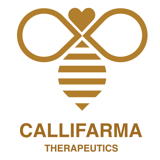Primed Larvae: Exploring Advanced Maggot Therapy and Personalized Wound Care
At CalliFarma Therapeutics, we continually push the boundaries of maggot therapy by investigating novel ways to enhance the therapeutic potential of our Lucilia sericata larvae. One of our cutting-edge research and development (R&D) directions involves “priming” the larvae with bacterial lysates or patient-specific wound exudate to boost their secretion activity. While these approaches remain under study, they offer a glimpse into the future of hyper-personalized wound care.
What Is Maggot “Priming”?
“Priming” refers to exposing the larvae to carefully selected bacterial lysates or patient-specific wound fluid before they are placed on (or used to produce secretions for) the patient’s wound. This controlled exposure is designed to:
- Increase the larvae’s immune response and secretion of proteolytic enzymes and antimicrobial peptides.
- Enhance the overall potency of the resulting larval secretions (CalliSarc®), which are used to dissolve necrotic tissue, disrupt microbial biofilms, and promote tissue regeneration.
Why Bacterial Lysates?
Using heat-inactivated or otherwise inactivated bacterial lysates delivers a safe, standardized stimulus that triggers the larvae’s natural defense mechanisms. Early findings suggest that primed larvae might produce:
- Higher levels of enzymes (e.g., proteases, collagenases)
- Increased antimicrobial factors, helping reduce infection risks and break down biofilms more effectively
Although it’s still in the R&D stage, this technique may pave the way for new protocols in advanced maggot therapy, making treatments more robust and targeted.
Personalized Larvae and Secretions
Another exciting direction is using patient-specific wound exudate for priming:
- Tailored Response
Each patient’s chronic wound has a unique microbiome and biochemical signature. Exposing the larvae to that specific wound environment before application may yield customized secretions that are fine-tuned to tackle that patient’s particular bacterial or fungal community. - Potentially Improved Outcomes
By “training” larvae with the individual’s wound components, the larvae’s secretions might offer greater efficacy and faster healing rates compared to standard maggot therapy.
Current R&D Status
All these approaches—bacterial lysate priming, patient-exudate priming, and personalized CalliSarc® production—are under investigation. We are conducting in-vitro and in-vivo studies to:
- Validate the safety of these methods, ensuring no undue risk to patients or clinicians.
- Confirm the efficacy of primed larvae vs. conventional approaches.
- Optimize production processes for scalability and consistency.
It’s important to note that these techniques are not yet part of standard clinical practice. They represent emerging possibilities that we hope to refine and eventually make available to healthcare providers, pending further scientific validation and regulatory approval.
Our Vision for the Future
By harnessing the natural power of maggot secretions and directing it through priming strategies, we aim to develop highly adaptive, effective wound care solutions that address the growing challenges of chronic, hard-to-heal wounds. Our ultimate goal is to personalize maggot therapy to each patient’s unique wound environment, thereby maximizing the therapeutic outcomes while minimizing treatment time and cost.
Disclaimer
All “Primed Larvae” concepts described here are part of CalliFarma Therapeutics’ ongoing R&D activities. They are not yet clinically approved or commercially available. We remain committed to transparent reporting of our research findings as we work toward the next generation of biotherapeutic wound care.
